Drip coffee, a term familiar to many but understood in its entirety by few, has a rich history and cultural significance that spans across continents. From its inception in European countries to its transformative effects on global coffee culture, this brewing method has carved its niche in the hearts of coffee enthusiasts everywhere. But, what is drip coffee truly? Dive in as we embark on a step-by-step journey through the intricate process of the drip method, unraveling its origins, evolution, and its profound impact on the way we appreciate coffee today.
Drip Coffee: Key Takeaway
- Understanding the Science: The article emphasizes the importance of mastering the basic principles behind drip brewing, including the extraction process and the role of water temperature, to create the perfect cup of coffee.
- Machine and Filter Selection: Choosing the right drip coffee maker and filter type has a significant impact on the quality of your brew. The guide provides a comprehensive overview of what features to look for in a machine and how different filters affect the final taste.
- Coffee-to-Water Ratio: Achieving the right balance between strength and flavor hinges on the coffee-to-water ratio. Too little coffee results in a weak brew, while too much leads to an overpoweringly strong one.
- Bean Choices and Maintenance: The quality of the coffee beans you use, and how you maintain your machine and store your coffee, also affect the outcome. The guide dives into ideal bean varieties for this type of coffee and gives tips on machine upkeep and proper coffee storage.
- Comparing Brew Methods: The article offers an insightful comparison between drip and other popular brewing methods like French Press, Espresso, and Pour Over, helping you understand the unique benefits of each.
What is Drip Coffee?

Drip coffee, a popular method of coffee brewing, involves a specialized process to produce your favorite cup of Joe. The foundation of this technique starts with high-quality coffee grounds and hot water. In a typical scenario of making this coffee drink, hot water is poured over these grounds, allowing it to soak and steep, releasing the coffee’s complex flavors. A filter plays a crucial role in this procedure, acting as a sieve to ensure only the liquid coffee passes through.
Once the hot water fully saturates the coffee grounds, it commences its journey through a filter. This ensures that any remaining coffee grounds are left behind, offering you a clean and sediment-free cup. The freshly brewed coffee is then gathered in a receptacle, which can range from a simple pot to a more elegant carafe. So, the next time someone asks you what is drip coffee, you’ll be fully equipped to explain the intricacies of this beloved brewing method. (1)
Origins and History of Drip Coffee
The journey of this brewing technique is as rich and nuanced as the beverage itself. From its humble beginnings to its impact on global coffee culture, This delectable drink has evolved in intriguing ways. Below, we’ll dive into where it all began, how it has evolved, and the cultural shift it has caused in the world of coffee.
The Birthplace of Drip Brew

The cornerstone for this modern brewing technique was laid in Germany by Melitta Bentz, who invented paper coffee filters in 1908. (2)
- Germany: Melitta Bentz pioneered the use of paper filters, revolutionizing the drip-brewing process. Her invention enabled coffee to be brewed without any residue, making it cleaner and more enjoyable.
- Switzerland: A few decades later, in 1944, Willy Brand innovated further by introducing an automatic drip-brew machine that employed circular paper filters.
- First Electric Drip Brewer: In 1954, the Wigomat, one of the earliest electric drip brewers, was patented in Germany by Gottlob Widmann.
In summary, Europe played a significant role in shaping what drip coffee is today, with contributions from both Germany and Switzerland.
Evolution Over Time
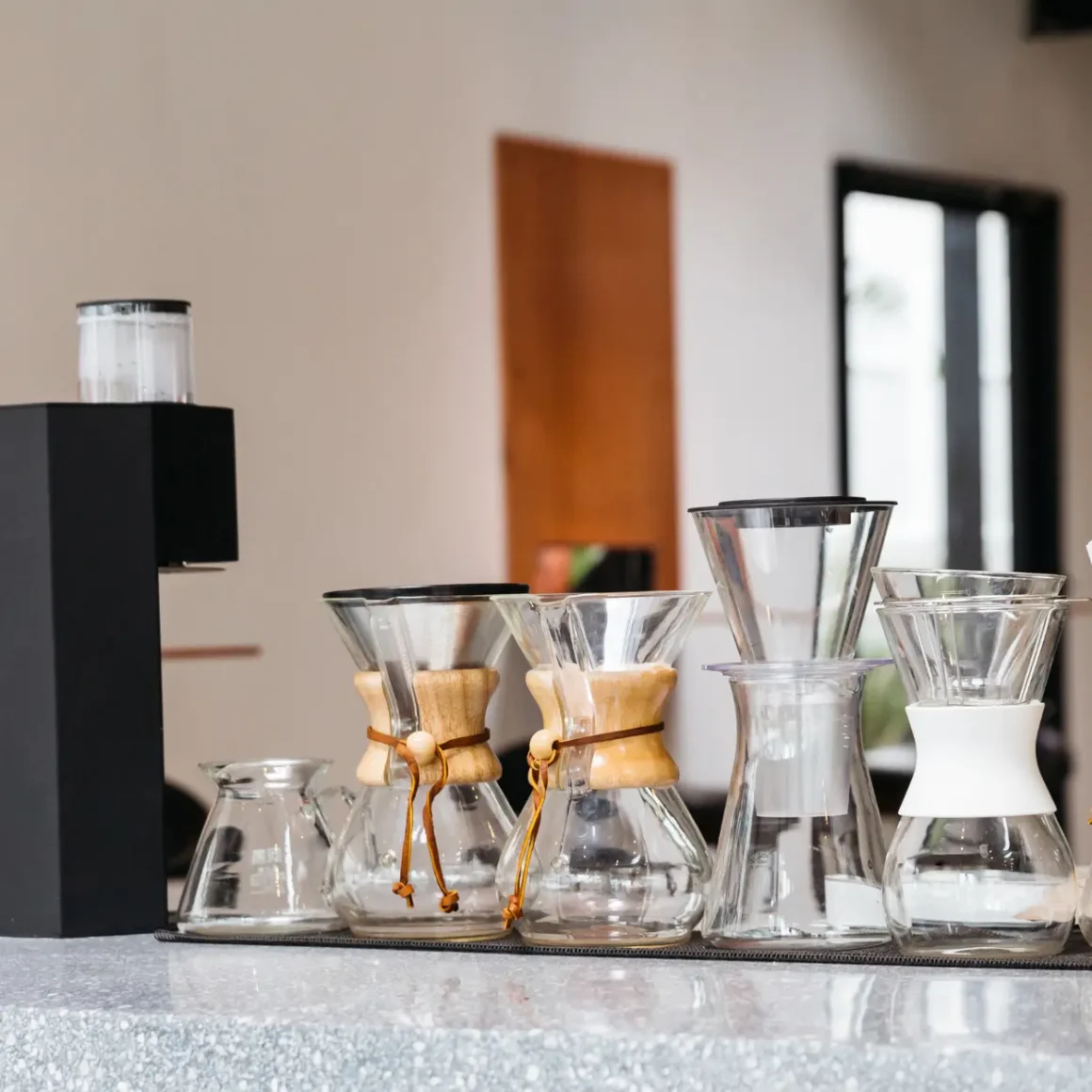
Over the years, This brewing method has witnessed several transformations that have contributed to its modern identity.
- Percolators Phased Out: In the 1970s, coffee percolators that combined boiling, steeping, and drip brewing fell out of favor. They were largely replaced by drip brewers, as percolators often resulted in bitter coffee due to over-extraction. (3)
- Filter Variations: Initially, paper filters were popular because of their convenience; they could be thrown away with the used coffee grounds. Today, permanent filters made from various materials like fine metal, plastic mesh, or even porous ceramics offer an eco-friendly alternative.
- Mathematical Brewing: Interestingly, scientific theories such as the Thue-Morse sequence have been applied to drip brewing, promising to deliver a uniform strength of coffee.
The ever-evolving technology and methods signify that this brewing method is not just a static concept but a dynamic and continually improving entity.
How It Changed the Coffee Culture
This lovely beverage has had a substantial impact on coffee culture globally.
- Japan: In Japan, filter coffee is considered central to coffee connoisseurship, elevating its status within Japanese culture.
- South India: Known as Kaapi, homemade filter coffee has a special place in South Indian households. Brands like Mysore Café and Cothas Coffee have become household names.
- Unique Flavors: The use of additives like chicory in South India and Louisiana adds a special layer of flavor and culture to the experience.
In essence, this coffee has seeped into various cultures, each adapting it in unique ways while maintaining the essence of what is drip coffee.
The Science Behind Drip Brewing
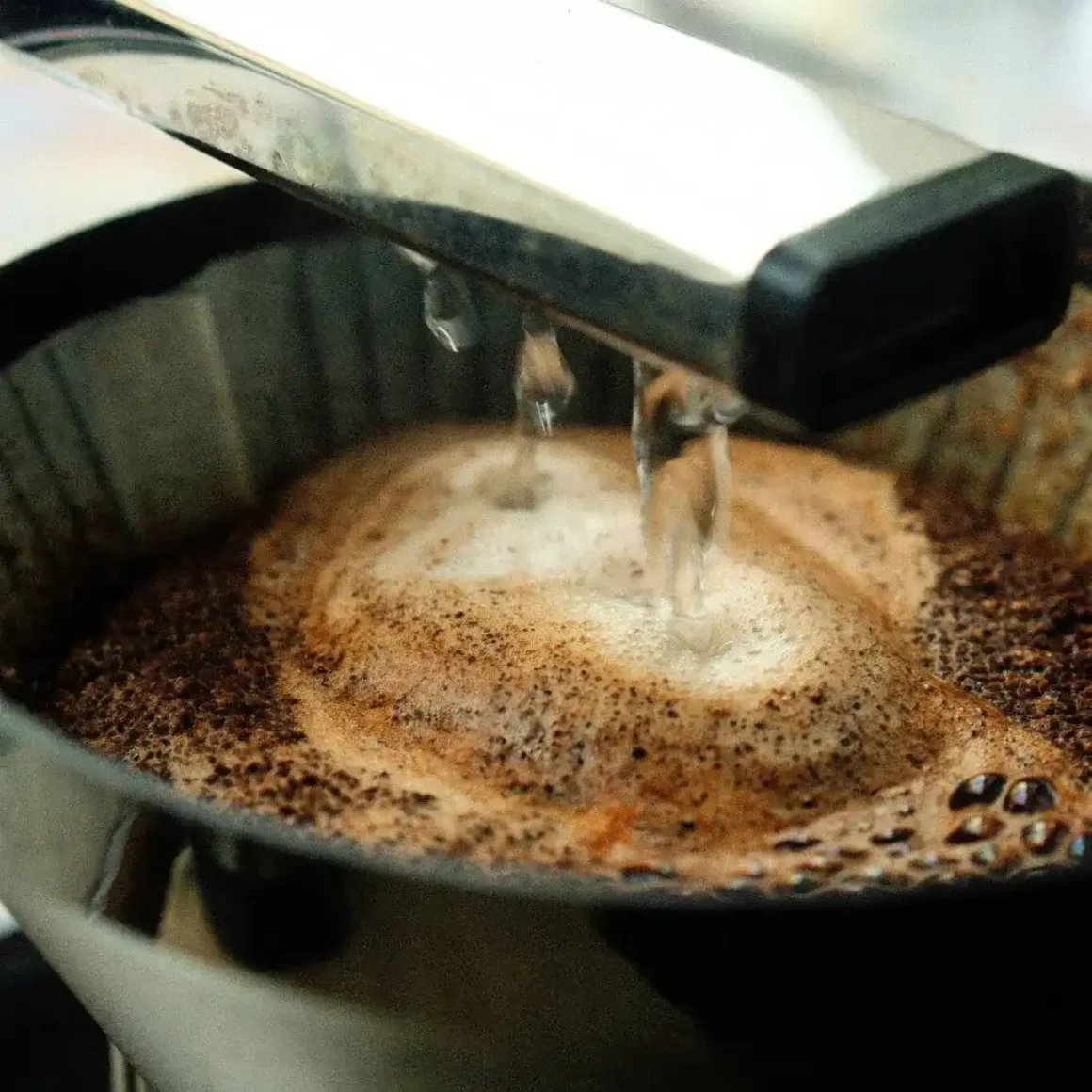
When it comes to understanding the intricacies of coffee, drip brewing remains one of the most fascinating methods, often serving as an entry point into the world of specialty coffee. While the process might seem straightforward, it’s a veritable symphony of scientific variables working in harmony. In this section, we will delve into the nitty-gritty details that define drip brewing, from the chemistry of extraction to the influence of water temperature and grind size.
Understanding Extraction
To start, let’s talk about what extraction means in the context of this brewing technique. When hot water comes into contact with coffee grounds, a complex chemical process begins, pulling out flavors, aromas, and compounds from the coffee beans. This is what we call extraction.
- Coffee-to-Water Ratio: Accurate measurements are crucial for ideal extraction. Using tools like a coffee-to-water ratio calculator can assist in maintaining consistent results.
- Weighing Beans: For the most precise outcomes, weigh your coffee beans instead of measuring them by volume.
- Brew Time: The length of time the water remains in contact with the coffee grounds also affects extraction. Too long can result in over-extraction, making the coffee bitter; too short could mean under-extraction, leading to a sour taste.
By understanding these aspects, you elevate your brewing game, offering greater control over the end product, even in an automated setting.
The Role of Water Temperature

Let’s turn our attention to the pivotal role water temperature plays in drip brewing. The coffee brewing temperature has a direct impact on the extraction process, affecting both the flavor and body of the final brew.
- Ideal Temperature: The optimal temperature for this brew lies between 195-205°F (90-96°C).
- Heat Stability: Modern machines often come with settings that allow you to control the brew temperature, ensuring consistent heat throughout the process.
- Pre-infusion: Some machines offer a pre-soak feature, allowing the coffee grounds to bloom, further enhancing flavor extraction.
Understanding the role of temperature in drip brewing not only improves the taste but also allows you to customize your coffee to your personal preference.
Grind Size and Its Influence
Lastly, let’s discuss how the grind size of your coffee beans affects the brewing process. A medium grind is usually recommended for this coffee brew, but why is that so?
- Medium Grind: The surface area of a medium grind is optimal for balanced extraction. Most store-bought coffee comes in this grind size.
- Fresh Grinding: Grinding your beans just before brewing can significantly improve the quality of your coffee. It allows for a fresher taste as more volatile compounds remain intact.
- Uniformity: A consistent grind size ensures even extraction. Using a good quality coffee grinder can help achieve this.
Understanding the significance of grind size helps you fine-tune how to make drip coffee, enabling you to enjoy a cup that’s just the way you like it.
Techniques and Tools for Perfect Drip Coffee

The journey to a perfect cup of this drink involves much more than just pressing a button. By understanding the variables at play—from the coffee machine you choose to the filters and the coffee-to-water ratio—you can elevate your brewing experience to a whole new level. This section delves into the nuts and bolts of mastering this brew at home.
Choosing the Right Coffee Machine
Your coffee machine is the cornerstone of the drip brewing process. While its primary function is to deliver an excellent cup of coffee, factors, like build quality, user-friendliness, and even the price tag, can’t be ignored.
- Quality and Construction: Opt for a machine that is well-built and durable. A poorly made machine won’t just ruin your coffee; it could also require frequent replacements or repairs.
- User-friendliness: Look for a machine that is easy to operate. Complicated controls can make even the best drip coffee maker frustrating to use.
- Brew Settings: If you want more control over your coffee, consider a machine that allows you to adjust the brew temperature, flow rate, and brew strength. Some machines also offer a pre-infusion option, giving your coffee grounds time to bloom before the full brewing process begins.
- Thermal Carafe vs Hotplate: A machine that features a thermal carafe is generally preferable to one with a hotplate, as it keeps your coffee warm without altering its flavor.
So, when choosing a machine, think beyond just the ability to brew coffee; consider the overall experience and the longevity it offers.
Filter Options and Their Impact
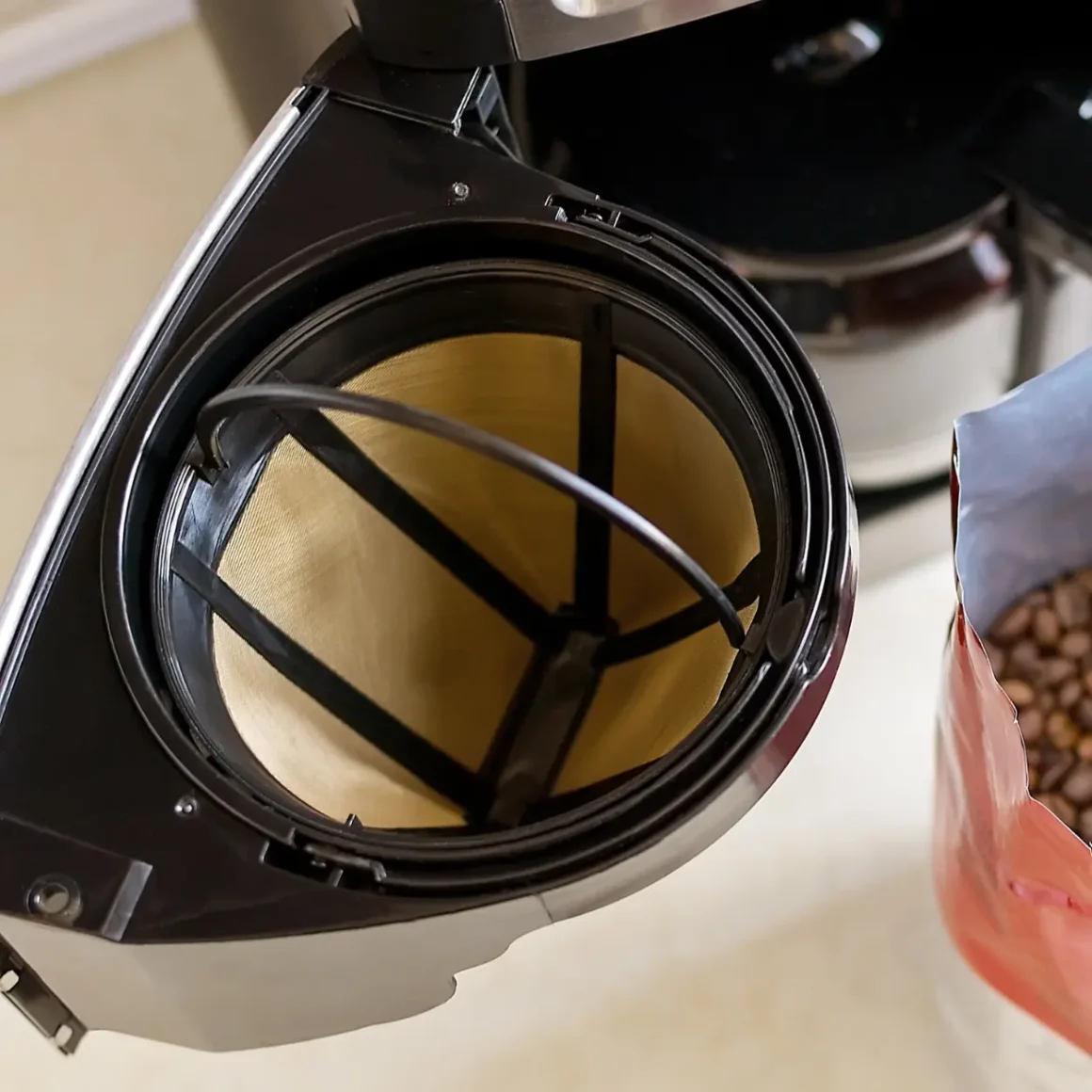
The type of filter you use can dramatically influence the taste and texture of your delightful beverage. It’s a seemingly small choice that can make a big difference.
- Paper Filters: These are great for a cleaner cup as they trap more of the coffee’s soluble elements. However, they can also absorb essential oils, potentially muting some flavors.
- Mesh Filters: These filters are reusable and can add more oils to your coffee, offering a richer brew. Keep in mind that if you use a mesh filter, a coarser grind will generally be more appropriate.
- Best Pour-Over Coffee Filters: If you prefer pour-over coffee, invest in a high-quality metal or cloth filter. These filters often yield a brew with more body and flavor compared to their paper counterparts.
Thus, your filter selection will affect not just the taste but also the environmental impact and the type of clean-up you’ll have to do afterward.
Ratio of Coffee to Water
The coffee-to-water ratio is crucial in achieving the right balance between strength and flavor. Too little coffee and you end up with a weak brew; too much, and it’s overpoweringly strong.
- Measuring by Weight: According to the Specialty Coffee Association, an ideal ratio is approximately 55 grams of coffee to one liter of water.
- Brew Size Matters: When using a drip coffee maker, it’s recommended to brew at least half a pot to avoid a weaker coffee. The more water that passes through the grounds in a short time, the weaker your coffee will be.
- Americano vs Drip Coffee: While an Americano is made by adding hot water to espresso, it typically has a different flavor profile, largely because the ratios of coffee to water differ significantly.
Understanding the balance between coffee and water is an essential step in mastering the art of this brewing method, regardless of the method you choose.
Comparing Drip Coffee to Other Brewing Methods
When it comes to brewing coffee, one size doesn’t fit all. The method you choose significantly influences the flavor, aroma, and even the mouthfeel of your cup. Understanding how drip coffee stacks up against other popular methods like French press, espresso, and pour-over can help you choose the method that best suits your palate.
Drip Coffee vs. French Press
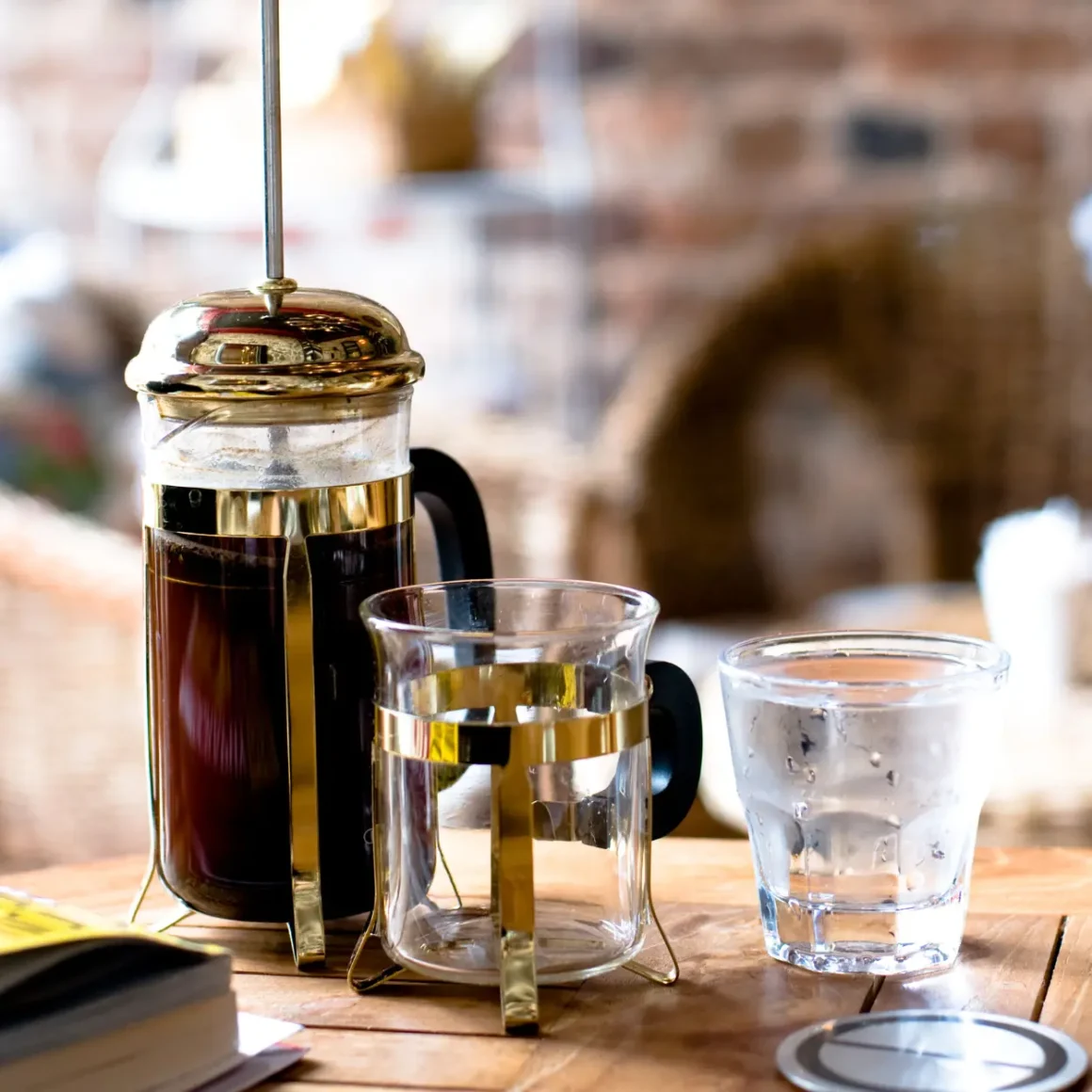
The French press coffee maker is often lauded for its simplicity and the rich, full-bodied coffee it produces. But how does it compare to this coffee brew?
- Flavor Profile: French press coffee usually has a more robust and complex flavor. This is because the method allows for fuller extraction and doesn’t use a paper filter, which lets more oils and fines into the cup.
- Ease of Use: Drip coffee makers are generally more user-friendly, especially those with programmable settings. French press requires a more hands-on approach, including manually steeping the coffee grounds.
- Clean-Up: A French press usually requires a bit more effort to clean, given the coffee grounds at the bottom of the pot, while drip coffee makers often use disposable filters for easier clean-up.
In the battle of drip coffee vs French press, your preference for either ease of use or flavor depth will tip the scale.
Drip Coffee vs. Espresso

Espresso is the foundation of many popular coffee drinks and is known for its intensity and rich crema. How does it measure up to this brewing method?
- Strength and Flavor: Espresso is much stronger and more concentrated than drip coffee. If you prefer a lighter, smoother cup, this delectable beverage is your go-to.
- Equipment: Espresso machines are generally more expensive and take up more counter space than drip coffee makers. They also often require a more precise grind and tamping pressure.
- Versatility: While drip coffee makers usually just make coffee, espresso machines offer the flexibility to create a range of drinks, from lattes to cappuccinos.
When considering drip coffee vs espresso, it boils down to personal taste and how much effort and resources you’re willing to invest in your daily cup.
Drip Coffee vs. Pour Over
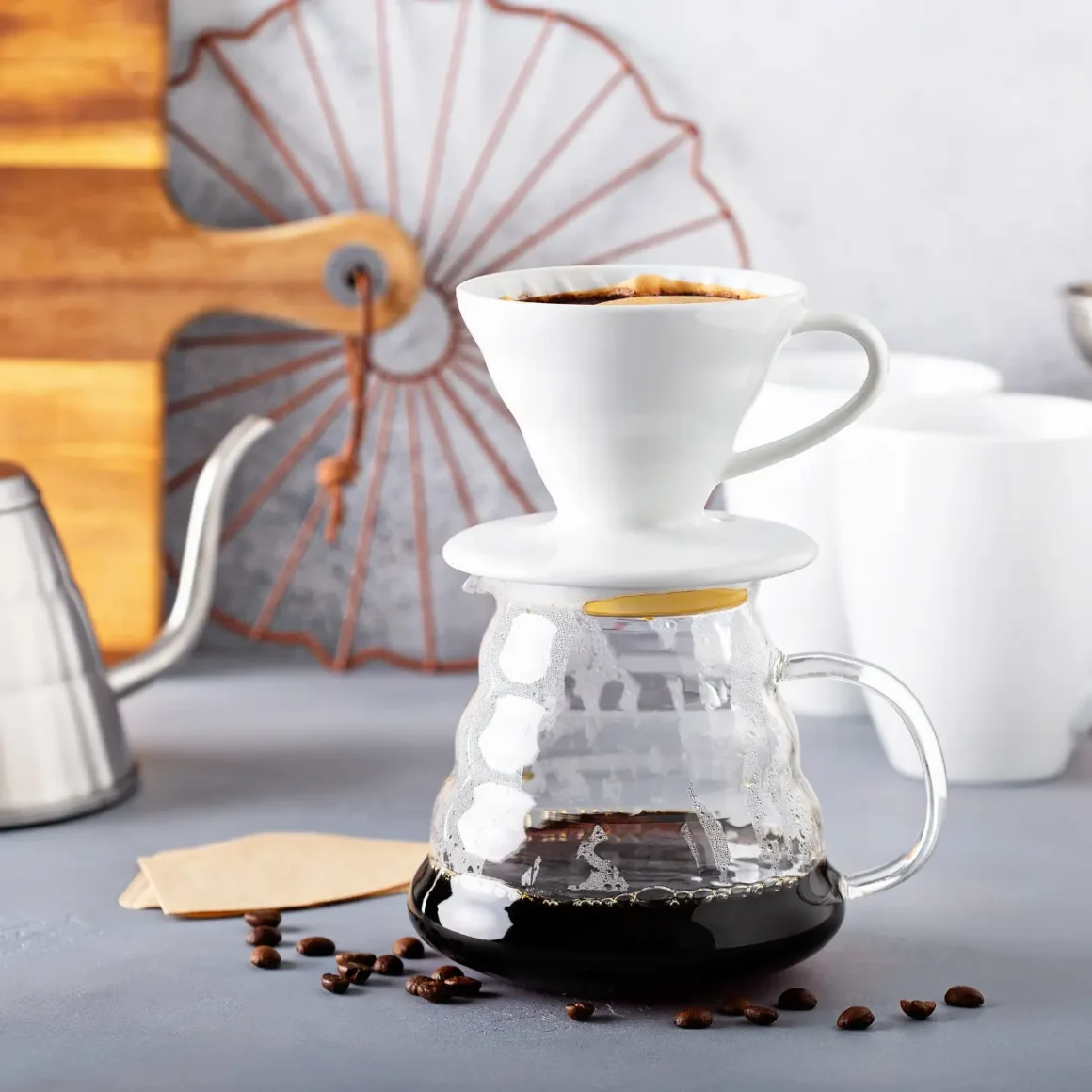
Pour-over coffee has gained popularity for its clarity of flavor and the control it offers during brewing. How does this manual method compare to automated drip coffee?
- Control: Pour-over gives you more control over every aspect of the brewing process, from the water temperature to the pour technique, which many believe results in a superior cup.
- Consistency: Drip coffee makers can offer more consistent results, especially for those who might not have the skills or patience to master the pour-over method.
- Time: Drip coffee makers are more convenient for those who are time-pressed, as they can often be programmed to make coffee at a particular time, unlike the hands-on pour-over method.
The choice between drip coffee vs pour over generally hinges on your lifestyle and whether you enjoy the ritual of manually crafting each cup.
Choosing Beans and Maintenance Tips
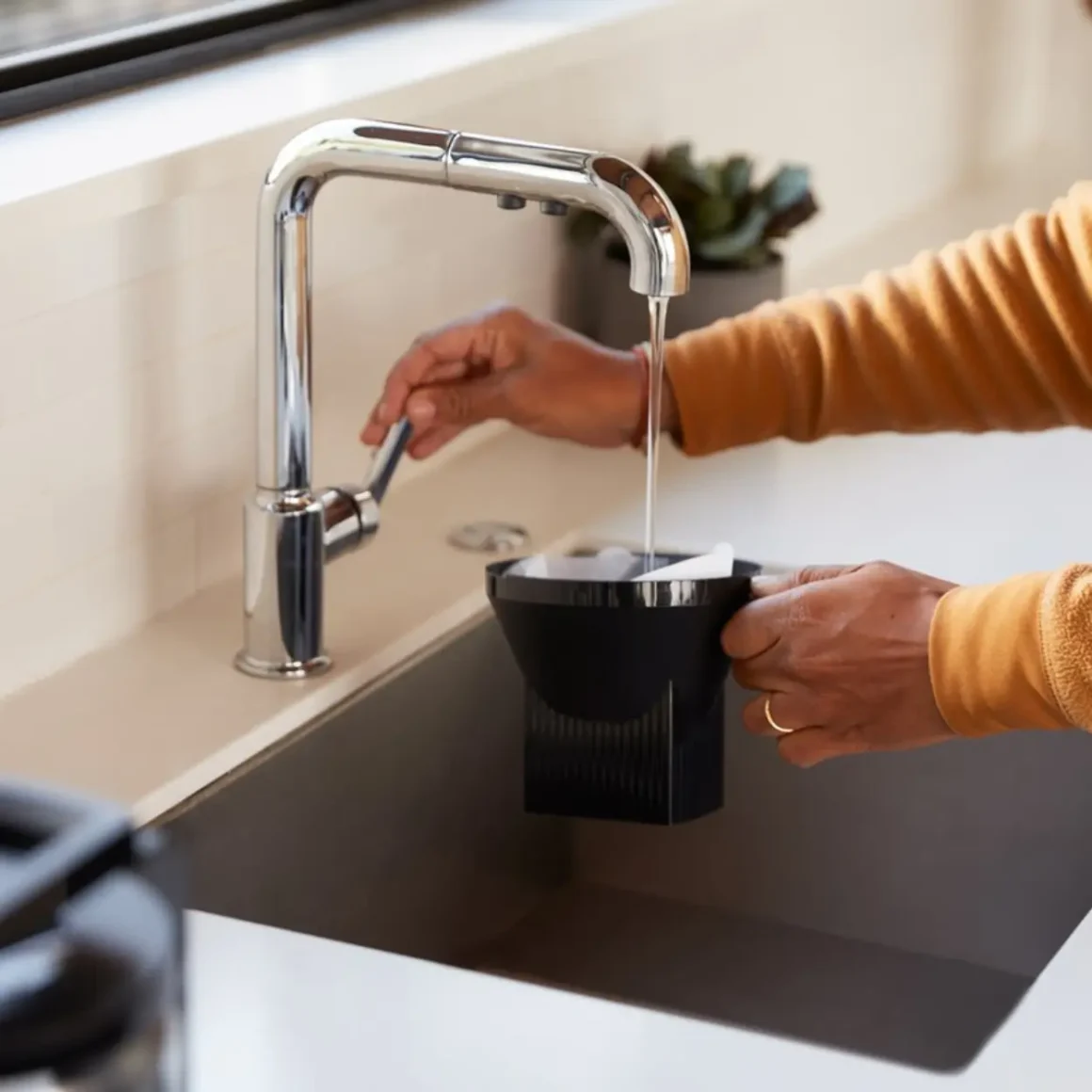
When it comes to enjoying a perfect cup of coffee, the beans you choose are just as crucial as the method you use to brew them. Furthermore, maintenance of your coffee machine and how you store your beans can dramatically affect the quality of your coffee. Below, we delve into each of these critical areas to ensure that your experience of this delicacy is as enjoyable as possible.
Bean Varieties Ideal for Drip Coffee
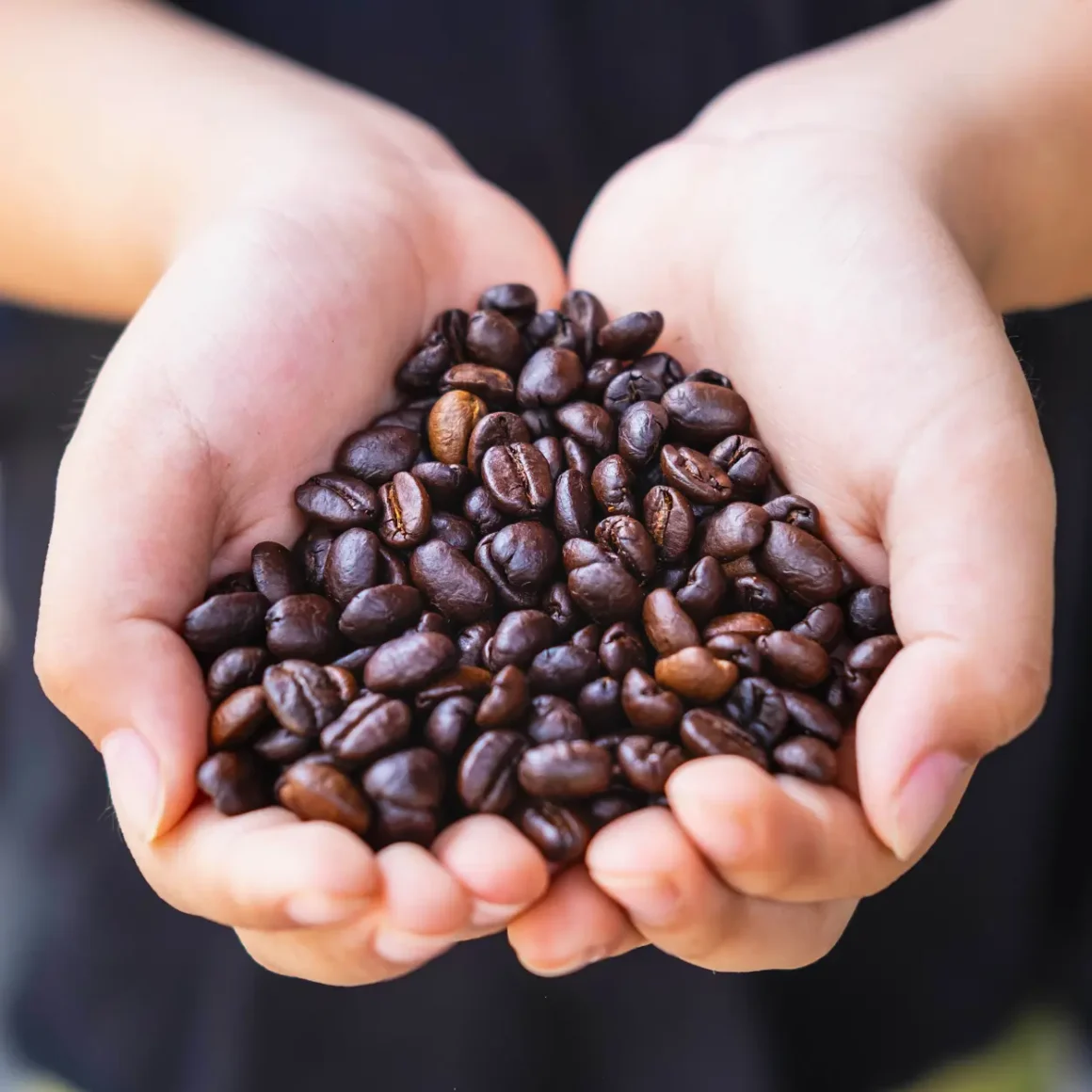
When it comes to this brewing technique, not all beans are created equal. Different varieties of coffee beans offer various flavor profiles, and some are better suited for this coffee than others.
- Arabica Beans: Generally, Arabica beans are more complex and less bitter compared to Robusta beans. Their balanced flavor makes them a popular choice for drip brewing.
- Robusta Beans: These are less common in this coffee brew due to their higher caffeine content and more bitter, less acidic profile. When it comes to arabica coffee vs robusta coffee, Arabica is generally preferred for its nuanced flavors.
- Blends: Some coffee aficionados prefer blends that mix characteristics of both Arabica and Robusta beans to create a balanced cup ideal for drip brewing.
In essence, choosing the right coffee bean variety can enhance your experience, tailoring it to your particular taste preferences.
Maintaining Your Coffee Machine
Your coffee machine is an investment, and like any other appliance, it requires regular upkeep for optimal performance.
- Regular Cleaning: Ensure you are washing all removable parts after each use. It prevents the build-up of coffee oils and residue, which can affect taste.
- Descaling: Calcium build-up can adversely affect your machine’s performance. Use a descaler or a vinegar-water solution every few months to remove these deposits.
- Check Seals and Hoses: Periodically inspect any rubber seals or hoses for wear and tear, as leaks can compromise the brewing process.
Regular maintenance not only extends the life of your coffee machine but also ensures that each cup you brew is of the highest quality.
Storing Coffee for Freshness
The way you store your coffee beans is pivotal in maintaining their freshness, flavor, and aroma. Improper storage can lead to stale coffee that lacks the qualities you desire in a good cup.
- Air-Tight Containers: Always store your coffee in an air-tight container to keep it fresh for longer periods.
- Cool, Dark Place: Exposure to light and heat can degrade your beans. Store them in a cool, dark place but avoid the fridge or freezer as the moisture can damage them.
- Buy Whole Beans: Opt for whole beans and grind them as needed to maintain maximum freshness.
Understanding how to store coffee beans properly can make a noticeable difference in the quality of your coffee, maintaining the flavors and aromas that make each cup special.
Conclusion
In this comprehensive guide, we’ve journeyed through the multi-faceted landscape of this coffee brew. From the science behind the brewing method to comparisons with other popular coffee-making techniques, we have aimed to answer the question, “What is drip coffee?” in the most thorough way possible. We’ve explored how choosing the right coffee machine, understanding your filter options, and mastering the coffee-to-water ratio can contribute to the perfect cup. We’ve also addressed the importance of selecting the right bean variety, the nuances between arabica coffee and robusta coffee, and essential tips for machine maintenance and coffee storage.
When you consider all these factors, it’s evident that a drip coffee maker is more than just an appliance; it’s a gateway to a rich and flavorful world that can be tailored to suit your personal preferences. The art of making this delightful beverage might seem complex, but with the right knowledge and tools, it’s an incredibly rewarding experience.
So the next time you sip a cup of this coffee drink, you’ll not only relish its taste but also appreciate the expertise and care that went into brewing that perfect cup. Cheers to better, more flavorful mornings ahead!
FAQ
What makes drip coffee different from other brewing methods?
This coffee brew is an automated process that offers less control over variables like extraction time and water temperature compared to methods like Pour Over or French Press.
Is drip coffee stronger than espresso?
No, espresso is generally stronger due to a more concentrated brewing process.
How do I choose the best coffee beans for drip brewing?
Opt for medium-grind coffee beans, and for the best flavor, choose freshly roasted beans from a reputable roaster.
What's the ideal temperature for brewing drip coffee?
The optimal coffee brewing temperature for drip brewing is around 197.6 F.
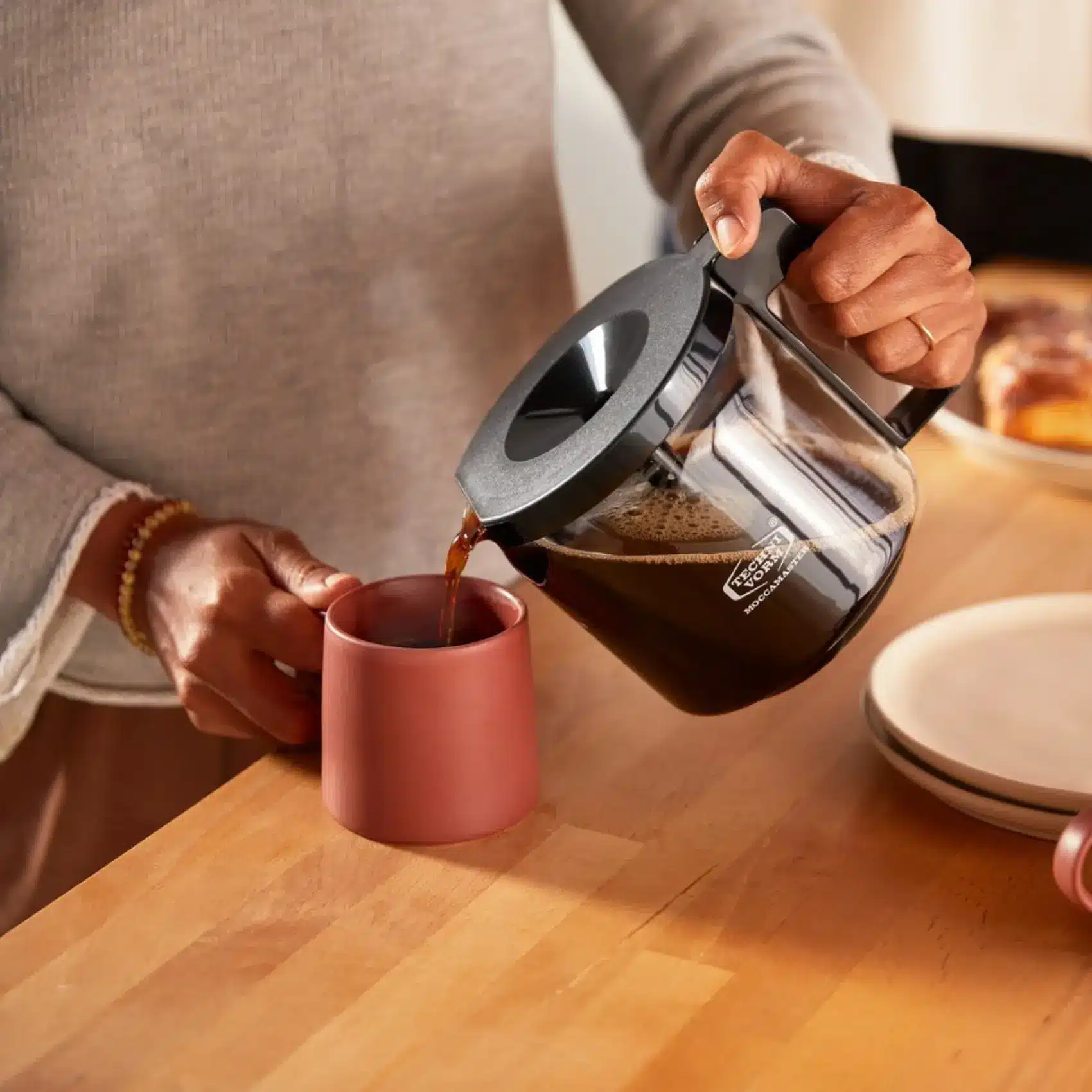








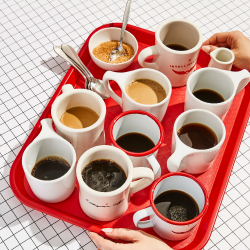













![Nguyen Coffee Supply - Truegrit Robusta: Medium Roast Premium Whole Coffee Beans, Vietnamese Single Origin, Direct Trade, Low Acid with High Caffeine Content, Roasted in Brooklyn [12 oz Bag]](https://m.media-amazon.com/images/I/41bn3Dt3gnL._SL160_.jpg)













